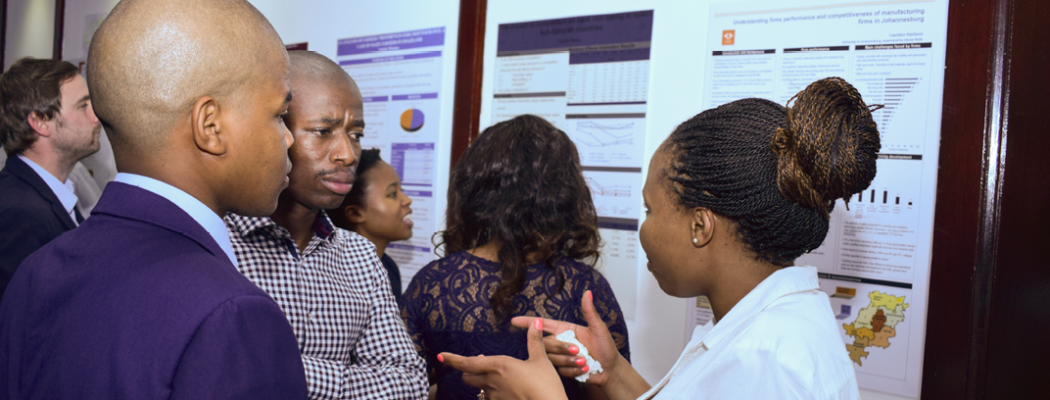Deepening regional integration in Southern Africa
Download SA-TIED Research Brief 2019/1: Deepening regional integration in Southern Africa
Regional integration is making steady progress in Southern Africa, leading to the development of regional value chains (RVCs) that could strengthen the competitiveness of the region. Importantly, the development of RVCs also creates pressure for further integration. While integration brings major benefits for the region, these are unevenly distributed. Policy makers driving the process need to demonstrate more widespread gains to secure buy-in from all stakeholders.
Regional integration is strongly linked to the expansion of regional value chains
There are growing levels of regional integration in Southern Africa and dynamic regional export growth in some sectors
Regional FDI has been important for the growth of regional apparel industries and the spread of supermarket chains is starting to catalyse growth in the regional food industries
These developments support the case for ongoing steps to dismantle barriers between the countries of the region
Intra-regional trade flows in Southern Africa
The familiar narrative on African trade is that it is characterized by dependence on raw material exports, low levels of regional integration, poorly developed RVCs and, in the case of intra-regional trade in Southern Africa, a lopsided trade balance that favours South Africa.
On closer examination, a more nuanced picture emerges. In the post-2000 period, the share of exports sold into the region has increased for almost all South African Development Community (SADC) countries. Trade for many countries is highly regionalized, even compared to the highly integrated Asian and European regions. But when South African imports are excluded, levels of integration in the region are relatively low.
As the dominant economy in the region, South Africa is the major source of intra-regional exports and the primary regional market for other SADC country exports. But South Africa still only sources a relatively low share of its total imports from the region and consequently runs a large trade surplus with the rest of the SADC. A further distinctive feature of SADC trade is that the product composition of exports is oriented more towards manufactured goods compared to the region’s exports to the rest of the world.
Data from the UNCTAD-Eora Global Value Chain Database suggest that while SADC countries are well integrated into global value chains (GVCs), their role is primarily as exporters of resources. There is some evidence of strong regional linkages with high shares of regional value added in the exports of several SADC countries, but the bulk of foreign value-added exports are sourced from South Africa.
The development of value chains in the apparel and textile industries
Since 2000, several sub-Saharan African (SSA) countries have expanded export-oriented apparel industries aimed mostly at developed country markets in the US and the EU. However, very little of this first wave of entry into GVCs used other regional suppliers or supplied regional markets.
However, the phasing out of the Multi-Fibre Arrangement (MFA) with its concomitant decline in exports to these markets has led to much greater reliance on regional markets. This ‘new regionalism’ has been driven by a number of forces: (i) South Africa emerging as a regional end market; (ii) buyers from South African retailers taking advantage of tariff-free entry into the South African market and creating regional supply chains; and (iii) new forms of regionally-embedded Foreign Direct Investment (FDI) primarily from South Africa (into Lesotho and Swaziland) and Mauritius (into Madagascar).
Over 2006–17, total regional apparel imports into the South African market rose tenfold, amounting to nearly 20% of total SSA apparel exports. Southern African Customs Union (SACU) and SADC preferential trade access and rules of origin create an enabling environment for the emergence of regional investors and end markets, but the value chain drivers of these processes lie in regional value chain dynamics. Hence the regional policy challenge lies in mechanisms to support regionally-embedded firms and build their capabilities.
Can the ‘retail revolution’ advance ‘developmental regionalism’?
The large South Africa-based retail chains have been expanding across the continent and, by 2015, the top five chains had 640 stores outside of South Africa. But, most of their products are supplied from South Africa and the question is whether these retail chains can catalyse the development of local suppliers outside of South Africa.
The supermarket chains clearly have a longer-term interest in the development of local suppliers as a means of diversifying their supply base. However, exacting standards, large volume requirements, and competitive pricing make supplying large chains difficult for local suppliers. Also, South African retailers meet significant barriers in some parts of Africa. These range from poor road, rail, and port infrastructure to cross-border regulatory compliance issues.
Namibia provides an interesting case. All the major South African retail stores have a presence there and the overwhelming share of fresh and processed food products on the retail shelves have historically come from South Africa. In 2016 the Namibian Retail Charter was launched, aiming to stimulate local production. Interviews undertaken in Namibia indicate that this voluntary Charter has been effective in building partnerships between retailers and local suppliers.
Can the auto industry drive regional integration?
Preferential regional trade access (e.g. SADC, SACU) is critical, but so is preferential access to extra-regional export markets
The existence of a regional economic hub is important — South Africa plays this role, but slow growth has limited regional prospects
South Africa needs to improve access of final goods into its market, which it can accomplish by easing restrictive rules of origin
Regional integration can be boosted by strong private sector pressure on governments
Appropriate regional industrial policy can play an important role. An example is government support for projects undertaken by retailers in collaboration with local suppliers
The political geography of the continent and the tendency of the industry to cluster in a few locations, which in turn develop key agglomeration advantages, mean that many smaller countries would miss out on attracting investments. It will, therefore, be difficult for the automotive sector to drive regional integration independent of a broader integration process that develops RVCs in a range of sectors within the context of a larger common market.
Regional value chains in the auto sector have played a major role in driving regional integration in trade groupings such as Mercosur and ASEAN. Within the SADC, the automotive industry is completely dominated by South Africa. Production in other SADC countries is minimal and they rely on imports of (mainly used) vehicles. The result is that automotive trade within the region is overwhelmingly unidirectional, from South Africa to other SADC countries.
There is an argument that the smaller economies could be drawn into an automotive RVC as suppliers of components for cars which are assembled in South Africa. However, the small Southern African automotive cluster is already spread across three major locations, all of which are in South Africa. It is difficult to envisage the emergence of many more such clusters in the Southern African region in the short-to-medium term.






